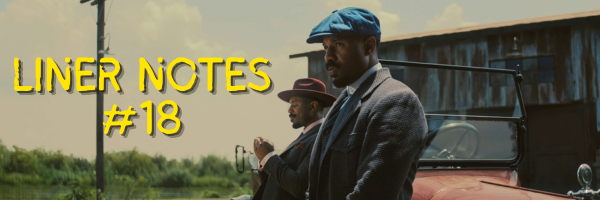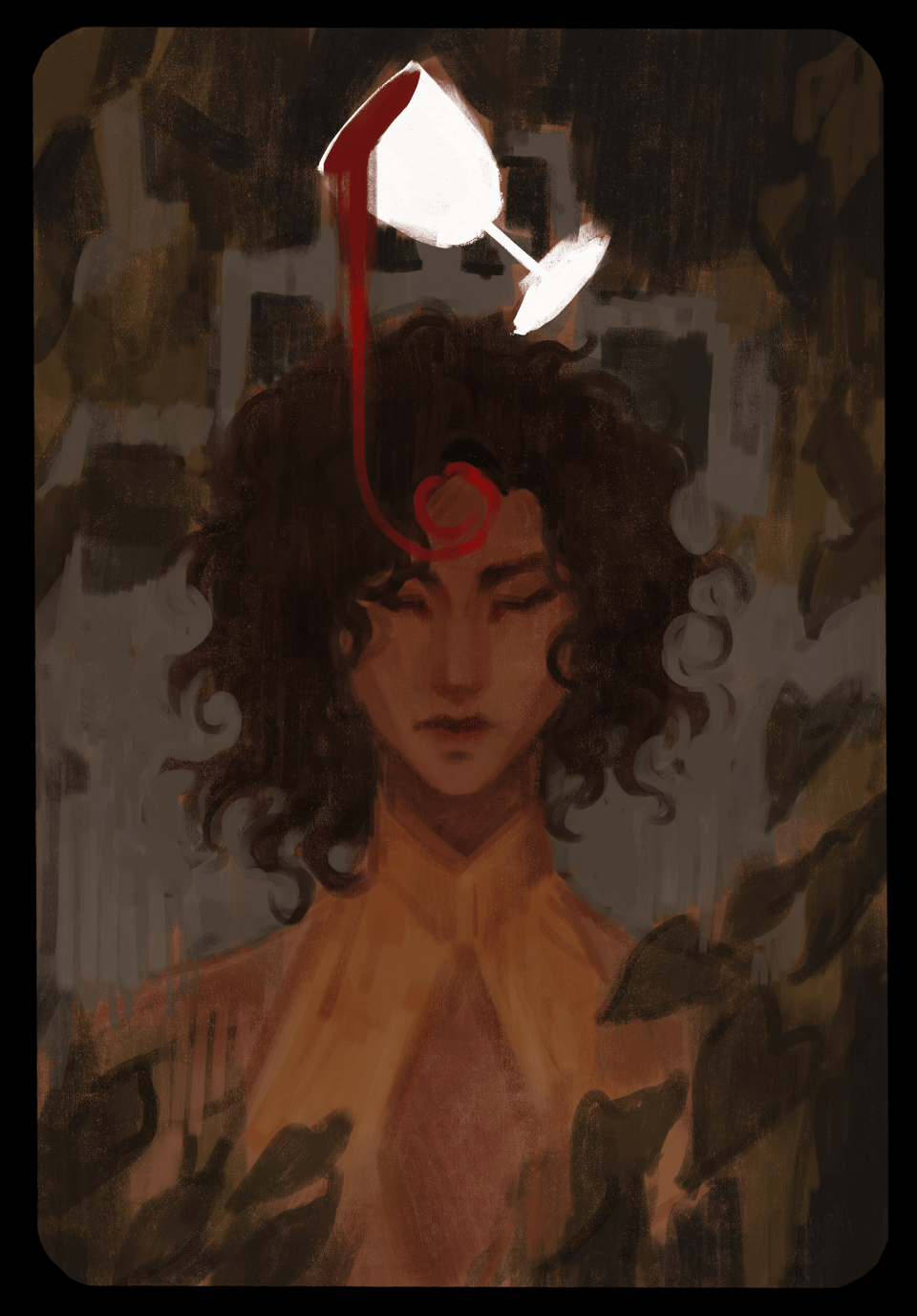Liner Notes #18: Connection

Before anything else, I need to take care of book business. Here’s what’s going on with The Memory Hunters and Bitter Medicine:
There’s a Goodreads giveaway going on right now for 100 ARCs (advance reader copies) of The Memory Hunters. Deadline to enter is May 12! Link here: https://www.goodreads.com/giveaway/show/411561-the-memory-hunters
It’s AANHPI Month, which means for thirty-one days, Asian Americans, Native Hawaiians, and Pacific Islanders are visible and will all be asked if they’re Chinese unless they’re Western Asian; Western Asians will be told they’re not Asian. Cynicism aside, romance author Jackie Lau has put together a Kobo Plus promotion for Asian romance authors—and every book is 4.99 USD! Including mine. Here’s the link! https://www.kobo.com/us/en/p/romance-by-asian-authors
Tarot card portraits of Key and Vale are here! I’ll be printing character cards to hand out at signings; there will also be a custom bookplate included with the book if you preorder through Charis Books & More, which is where I’ll be launching The Memory Hunters. More details the closer we get to launch, which is . . . not really that far off now.

Key’s card Vale’s card And here’s the Charis preorder link: https://www.charisbooksandmore.com/book/9781645662082
I saw Sinners last night in a doubleheader with Thunderbolts*, which is pretty unfair to Thunderbolts*. I’ve been Sinners-pilled since. Unlike a lot of people, I walked out of the theater mulling a lot of things over. Was this as good movie? Yes. I trust Ryan Coogler implicitly. Killmonger’s “nah” was the “nah” heard round the world and it’s part of the DNA of The Memory Hunters. But was I raving over Sinners immediately after the final scene? No.
But as with all excellent art, I kept thinking about it and thinking about it. I stayed up way too late reading analyses and takes and getting a feel for how others were reacting to it. There’s so much packed into this film that it requires multiple viewings; I’m not yet equipped to talk about the film specifically in a way that’ll honor its craft. Sinners is, without doubt, a masterful film, and I’m sure I’ll be burning with the fires of enthusiasm for it soon enough.
I’ll do my best not to spoil the film, but some small spoilers may slip through.
Let me preface this by saying I’m not a vampire fan. I’m not a werewolf fan either. Monsters have never appealed to me. I think it’s because I’ve felt so othered in my life that there’s no need for me to empathize with monsters. What’s radical is to just be human, sometimes. Anyway, when I heard this was a horror film and a vampire film, I shrugged, thinking it wasn’t for me. It wasn’t until I saw the trailer and realized this is a historical film that my interest was piqued. It’s also a blues history film, which is fantastic (please go see Sinners and bask in the music and also in Wunmi Mosaku’s glory).
A lot of people likely walked into this film not knowing a thing about the Mississippi Delta Chinese. There was a documentary and short video released about them in 2017, available on YouTube, which is where I first learned about them maybe five-ish years ago. I loved seeing the representation in Sinners, but their presence and what those characters did and what they represented is fodder for many, many thoughts.
One part of it is that the Chinese and by extension, Asian Americans, occupy a particular niche in American history. Asians have been seen as one thing or another and have often been stuck between the most visible racial groups (I’m not even touching on Pacific Islanders and the Native Hawaiians; I don’t know enough and that’s also not my lane). Much like the Chinese depicted in Sinners, Asians have benefited from their status as neither Black nor white—but at the same time, have held themselves apart (Why? Pick a reason: cultural, societal, financial, racial) while reading the currents of race relations in America in order to act accordingly. It’s already well known that white adjacency is a huge issue in Asian communities. I used to hear from white people, far less nowadays, thank God, that Black people were somehow privileged. But have the Asians chased Black adjacency the way they’ve chased white adjacency? Not at all. I guess that belief, like many other lies told to keep the non-elites from working together, is just a belief, and a thin one at that.
(I’ll take a brief tangent to touch on how Black culture absent Black people is cool but Black people are not. The biggest example of this has been K-pop, especially from the second wave onward, where rap, hip-hop, and gospel singing were utilized but without input from Black musicians or producers; same with Black hairstyles [horrifically appropriative!] and fashion. But anti-Blackness is prevalent among Koreans both in South Korea and America, proven by historical events like Latasha Harlins’s murder in 1991 and personal anecdotes like my friend’s ex-husband asking, upon learning that my friend was considering moving to my part of the Atlanta metro area, “Aren’t there a lot of Black people?”)
Sinners had me evaluating how I’ve acted in relation to the Black communities I’ve been around and the Black friends I hold dear, as well as how I’ve acted in general to Black folks. I mean, I was raised East Asian; I’ve a hundred percent fucked up and said something offensive, more than once. And I’ll tell anyone who’ll listen that we’re incredibly racist. First and foremost, I’m Taiwanese, which means my mother, who grew up under the strongest echoes of Japanese colonialism and was born into Chinese martial law, had one rule in the house: Never bring a Japanese man home. Then after that, the hierarchy went from dark to light. I’ve heard a ton of casual racism straight from the people who raised me and been in the room when they’ve been racist about my friends to my face. (“Are you sure you can trust that friend?” I have never been asked this about non-Black friends.) It’s been a lifelong project to free myself from those prejudices. The evaluation is ever ongoing.
But Sinners also had me thinking about The Memory Hunters. I was so inspired by the Mississippi Delta Chinese that I wanted to pay homage to them, as much as one can in a secondary world fantasy, in my book. Then in 2019, on a trip to Taiwan, where I went to the Lanyang Natural History Museum in Yilan, I learned that Taiwan and Georgia share a connection: specific species of conifer trees. It was such a marvelous coincidence that I filed it away for Key & Vale.
I also wanted to set The Memory Hunters originally in the Georgia Piedmont, though that shifted more to the mountains of Appalachia because honestly, I love the mountains more than the foothills and the flats. Populating the world of Bitter Medicine was easy. I just wrote a world I was already familiar with, one that was multicultural and multiethnic. Populating the world of The Memory Hunters, now—that was more difficult. I still wanted the same variety I had in Bitter Medicine, but this time, I had to be so much more careful about it, especially because my main character, Key, is Black.
I’m not going to go on and on about the process. The dang book isn’t even out yet. But seeing the Black and Chinese communities together in Sinners made me think immediately about Key and Vale (and Jing and Cal) and what that’ll signal to others—like, is solidarity real? Can huge class differences be overcome? Can we have a secondary world that evokes the South and the country without the genocide and slavery that built America? Am I dishonoring and erasing people if I don’t include that, or if I do, am I qualified to speak on it? How is Key, who will be hyper-scrutinized, I’m sure, representative or not in a world where white supremacy does not exist?
The road to hell is not paved with good intentions. It’s paved with questions stemming from fear and uncertainty.
I was at JordanCon last weekend, where I participated in a panel called “Creative Culpability in Fiction.” I was there with Sheree Renée Thomas, who answered the moderator’s question much better than I could, and before I could too. This level of scrutiny kills the creative process. Me, I call it meta-gaming, and while I hate it, it’s still a necessary part of editing because writers have to be aware of what they’re saying, even when they’re not intending to say something negative or hew to well-trodden stereotypes.
There’s only so much meta-gaming I can do with Key & Vale and I feel like I’ve done my due diligence for it. It’s time to do my due diligence for the sequel, actually, so I’ll be thinking about that instead. As for how others will interpret my work, I have a poor imagination when it comes to anticipating how other people will receive my work. I’ve just tried to be careful and genuine and true to my experiences, what I know, and what others have told me about their experiences. In a way, I’m feeling solidarity with Ryan Coogler. I saw an interview during which he talks about That Scene with Grace and how he’d meant it to be a personal beat for her. Audiences have interpreted it as negative commentary and there’s nothing he can do about it.
Well, that’s just how it is, sometimes.
I haven’t been listening to much lately. I had some Beastie Boys going earlier this week, and today I called up Outkast’s Aquemini and more specifically, “SpottieOttieDopaliscious.” I did that for my student, who was born and raised in the ATL metro area and did not know Outkast was from Decatur and could only name “Ms. Jackson” as a song. SHAME. I was similarly schooled by my friend A. after a concert we were at opened with the trumpet solo from “SpottieOttie,” so I had to pass the education on.
I’ll be listening to the Sinners soundtrack and score for a while. I spotted some familiar names in addition to Ludwig Gorenson: Rhiannon Giddens, Brittany Howard, James Blake, Buddy Guy, Rod Wave, Raphael Saadiq. Just powerhouse after powerhouse in the musical credits. Y’all, go see Sinners and come back as one of us. You’ll be glad you did.
See you on the B-side.
PS: A few years ago, I worked on a book called A Child’s Introduction to Asian American and Pacific Islander History, which was a fantastic experience. Highly recommended not just during AANHPI Month but all year. I ended up having to call the Mississippi Delta Chinese Heritage Museum to verify their location for the bibliography. One day, I’ll get down to Clarksdale to visit the museum.


Add a comment: